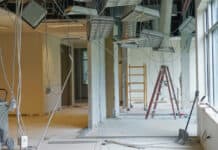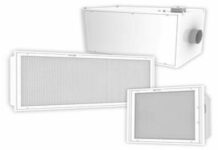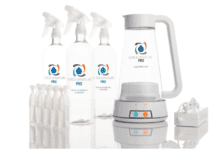By Brian Miller
Despite widespread vaccine rollouts and relaxed occupancy regulations, people remain hesitant about getting back to work as normal. One of their biggest concerns surrounds the perceived cleanliness of their workplaces, particularly in terms of indoor air quality (IAQ).
Employees’ desires for (and worries about) fresher air aren’t unfounded. As the World Green Building Council recently reported, about half the risk of airborne infectious spread could be solved through improved IAQ and monitoring, and lowering a space’s ambient humidity levels. However, the Environmental Protection Agency notes that the air inside a building tends to be more polluted than the air outside due to reduced ventilation and constant air recirculation. This puts the responsibility on facility managers to figure out effective ways to bump up indoor air quality—and quickly.
Filling a building with air purifiers is one option, though it’s economical for only smaller facilities. Most modular air purifiers are effective only up to a few hundred feet, so facility managers of larger buildings would need a lot of them. Installing a complex air purifying system that works through existing HVAC systems is another option, but it’s a pricey one, too.
The good news is that more scalable, affordable solutions are available to help facility managers improve indoor air quality in buildings of any size:
- Maintaining carpets and other workspace filters
Carpeting and upholstered surfaces in private and communal areas increase IAQ by attracting and trapping airborne particles like dirt, dust, and bacteria. These surfaces get dirty quickly, though, which means they need to be brought back to zero. In essence, this means “resetting” the fibers by treating them with a dry-polymer deep-cleaning product. After the cleaning, the treated carpets, cubbies, and related furnishings can then be put on interim and restorative cleaning schedules.
Interim cleaning serves three major purposes. First, it creates an appealing aesthetic. Remember: Workers tend to gauge their building’s indoor air quality on the basis of at least two of their senses. Thoroughly dry-cleaned carpets look and smell fresh. The second benefit of interim cleaning is that it keeps the textile filters from getting clogged, so they can continue to contribute to a cleaner, healthier environment. Finally, interim cleaning followed by occasional deep cleaning extends the life span of the investment, whether it’s an expensive carpet or a set of fabric-covered chairs and sofas in a waiting area.
- Increasing the use of plants
Improving a space’s air quality through the use of plants isn’t a new concept. However, many facility managers are taking the idea to more creative levels, like adding living walls to their spaces. These walls provide enhanced air filtering while creating a warmer environment where employees feel at home—and maybe even more productive.
Though living walls can be a less pricey alternative to air purifiers, they do require planning and an upkeep budget. For instance, though many plants “scrub” the air, not all plants are right for a workplace setting. Those that flower may release pollen, which can irritate people’s allergies. Other types of plants may end up increasing a space’s humidity, which can appeal to mold spores and require the use of a dehumidifier to monitor moisture. Consequently, facility managers interested in exploring the use of greenery should work with designers to determine which plants they want and where to place them.
- Wiping down surfaces instead of broadcasting disinfectant
During the height of the pandemic, many facility managers worked with their building service contractors to routinely broadcast disinfectants. Yet broadcasting has become a sticking point with some employees because it may not be as positive for indoor air quality as once believed. Disinfectants are technically labeled as pesticides, and some can be damaging from a health perspective if inhaled by human occupants.
Though wiping down surfaces takes more upfront time than broadcasting, it’s a preferable route. Wiping down touchpoints like handrails, elevator buttons, door handles, and bathroom fixtures isn’t as fast as broadcasting, but it is cost-effective because it’s focused and controlled. A sprayed disinfectant can land on anything, meaning it can start to degrade and damage delicate assets if it’s not removed immediately. Wiping down does the job without risking unintended wear or loss of those assets.
More employees will soon be returning to the office, and they are likely to be more concerned with the cleanliness of their space—including the building’s IAQ. Facility managers are well-positioned to quell their fears and give them a comfortable place to work, all by making a few changes to the way they approach building maintenance and design.
 Miller is a business support specialist at milliCare Floor & Textile Care, where he supports the company’s franchises and helps improve efficiency and productivity as they provide essential services to commercial facilities within local markets.
Miller is a business support specialist at milliCare Floor & Textile Care, where he supports the company’s franchises and helps improve efficiency and productivity as they provide essential services to commercial facilities within local markets.





















![[VIDEO] Collect Asset Data at the Speed of Walking a Building](https://facilityexecutive.com/wp-content/uploads/2024/02/maxresdefault-324x160.jpg)